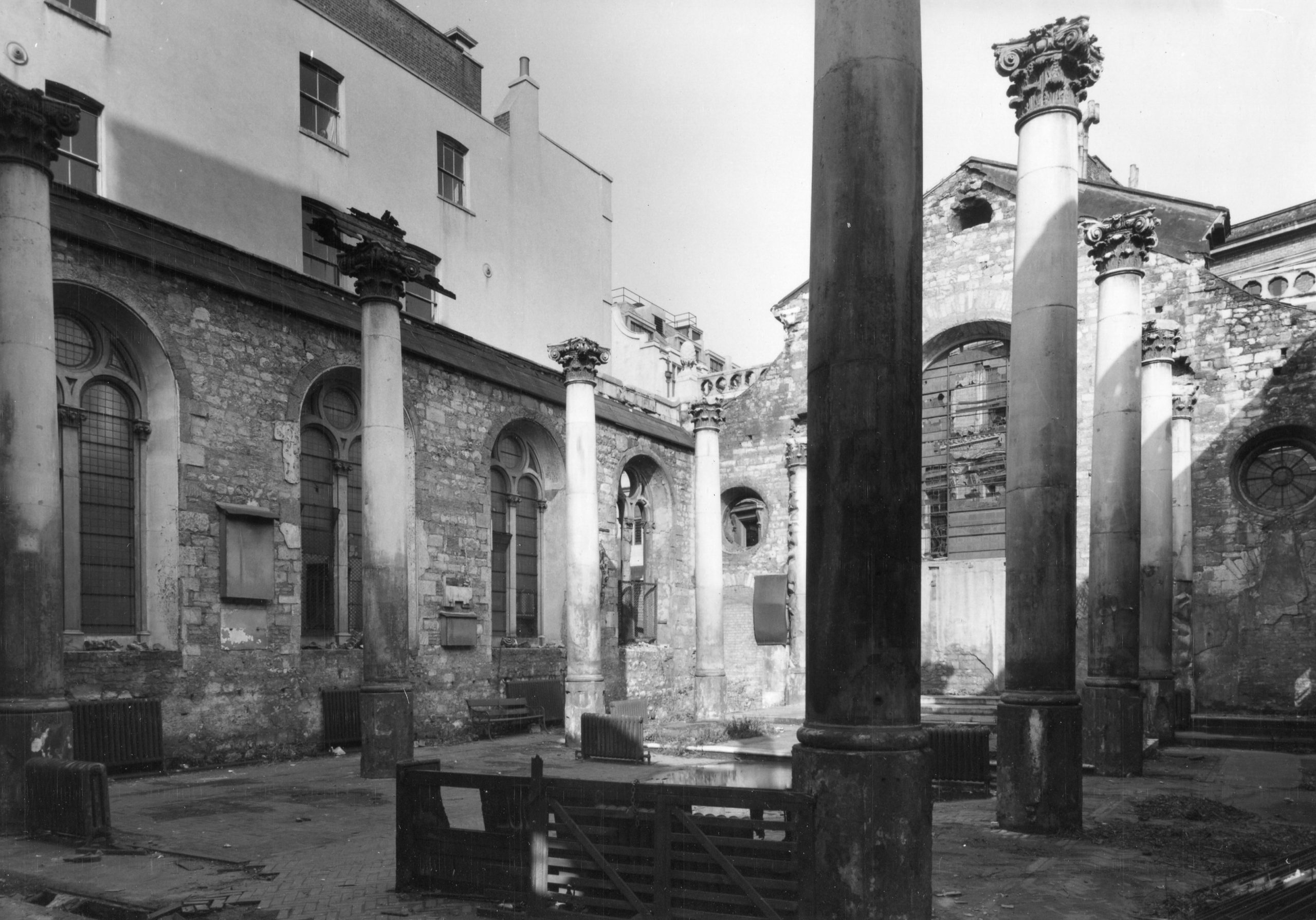Finest Hour 180
THE FULTON REPORT

Lord Mountbatten and Averell Harriman at the dedication of the church in Fulton in 1969
August 20, 2018
Finest Hour 180, Spring 2018
Page 38
Timothy Riley is Sandra L. and Monroe E. Trout Director and Chief Curator of the National Churchill Museum.
The idea of establishing a permanent memorial to Winston Churchill in the United States began in 1961 during Westminster College’s commencement ceremonies, when Westminster President Dr. R. L. “Larry” Davidson and members of the St. Louis Branch of the English-Speaking Union hatched a bold plan to move the war-damaged church of St. Mary the Virgin, Aldermanbury from London, England, to Fulton, Missouri.
The original church dates to the twelfth century, but it was rebuilt in 1677 by Sir Christopher Wren following the Great Fire of London. It stood proudly at the corner of Love Lane and Aldermanbury, not far from the medieval Guildhall and near Wren’s masterpiece, St. Paul’s Cathedral.
On the night of 30 December 1940, catastrophe struck again when the church suffered a direct hit by an incendiary bomb dropped by the Luftwaffe. When morning came on the final day of that year, only the external stonework and the eight columns with acanthus-leaf capitals remained. Wren’s church lay in ruins. It remained so for more than twenty years until Larry Davidson saw an article in Life magazine just before Westminster’s commencement ceremony. That Life article prompted a discussion that transformed the Westminster College campus and established a permanent memorial to Winston Churchill in the United States.
The effort to relocate St. Mary the Virgin from London to Fulton was both national and international. The City of London, the Diocese of London, and several American Presidents—Kennedy, Johnson, Eisenhower, and Truman—supported the effort. Perhaps the most powerful endorsement came from Churchill himself, who, aged eighty-eight, wrote to Westminster College, “I am honoured….The removal of a ruined Christopher Wren Church, largely destroyed by enemy action in London in 1941 [sic] and its reconstruction and re-dedication at Fulton, is an imaginative concept.”

On 19 April 1964, former President Harry Truman, former Westminster President Franc McCluer, and several other surviving members of the platform party who had been present on 4 March 1946, when Churchill delivered his “Iron Curtain” speech, joined British Ambassador Lord Harlach for the groundbreaking ceremony. President Truman turned the symbolic first shovel.
After nearly five years of construction, The Times of London called the effort “perhaps the biggest jigsaw puzzle in the history of architecture.

On 7 May 1969, the church was re-hallowed by the Right Rev. Anthony Tremlett, the Bishop of Dover. Former United States Ambassador to Britain Averell Harriman and the Earl Mountbatten of Burma (a member of the Royal Family and the Queen’s representative) gave the principal addresses and spoke about their experiences with Winston Churchill. Special guests at the dedication included Churchill’s youngest daughter Mary Soames and her eldest son Nicholas, now Sir Nicholas Soames MP.
Today, St. Mary the Virgin, Aldermanbury, remains a lasting symbol to Winston Churchill’s resilience and steadfastness in the face of adversity. It is the largest work in the collection of the National Churchill Museum, which was designated by Congress in 2009 as the nation’s Churchill
museum.
Subscribe
WANT MORE?
Get the Churchill Bulletin delivered to your inbox once a month.






